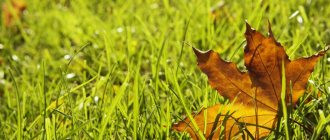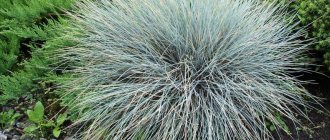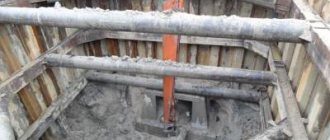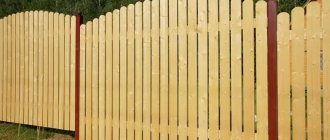The use of lime on the site is not limited to just whitewashing trees. This is a good tool for normalizing soil acidity - one of the parameters affecting crop yields.
Proper and timely liming will help regulate the pH level and improve the soil structure. We'll tell you how and when you need to apply lime in the garden, and give dosage data.
Need for liming
Soil with acidity levels below 5.5 needs liming, because many crops are simply not able to grow and develop in acidic soils. The most sensitive garden crops are tomatoes and legumes. By improving the soil structure, nutrients will be better absorbed by plants. After all, if there is a lack of calcium and magnesium in the soil, then this is:
- reduces its breathability;
- contributes to the compaction of the upper layers of the earth and the formation of a crust;
- increases the viscosity of the substrate;
- increases the amount of toxic substances for garden crops;
As a result, the number of beneficial microorganisms and earthworms in the soil, which through their vital activity improve the structure and composition of the substrate, decreases. With increased acidity, plant development slows down because they are not able to absorb nutrients.
Technology for treating a site with lime in spring
In spring, it is recommended to adhere to the following liming recommendations:
- It is better to plan the event approximately three weeks before sowing or planting vegetable garden crops;
- for liming, it is optimal to use powdered products that are well distributed over the soil layers;
- A good result is achieved by adding lime in early spring, immediately before the first loosening of the soil, adding deoxidizers in small portions.
It is important to remember that any fertilizers, as well as basic biologically active additives, are applied to the soil only after liming. As practice shows, adding a couple of kilograms of pure lime mixed with high-quality humus is more effective than ten kilograms of lime flour simply scattered over the garden area.
Advantages and disadvantages of autumn soil liming
Lime the soil both in autumn and spring. However, more often lime is added during digging in the fall. The advantages include the fact that during the growing period of plants, nitrogen fertilizers containing ammonium are used, and all fertilizers that contain it cannot be used together with lime substances. It is also believed that the procedure should be carried out no later than 21 days before planting seedlings or sowing seeds.
The disadvantages of liming in the fall include the fact that certain soil deoxidizers cannot be used simultaneously with organic matter, which is added just before digging. It is also recommended to carry out the procedure in dry weather, and in the fall it often rains.
Types of fertilizers
It is believed that carbonates cannot be used simultaneously with manure and other nitrogen fertilizers, since they neutralize each other's effects. But there are substances that are even recommended to be added to manure or compost heap to enhance the activity of microorganisms:
The following substances are suitable for reducing soil acidity and plant nutrition, but they are not used simultaneously with manure:
Phosphorite flour and limestone have a similar effect - they alkalize the soil, but they cannot be added to the soil together. The fact is that a slightly acidic environment is required to dissolve phosphorus.
Excessive application of carbonates can stop the process of phosphate absorption by plants. It is better to apply lime as a fertilizer for the garden separately, and then test the soil for acidity.
What substances are used for liming
In many ways, the yield and taste of fruits depends on the normal pH level in the soil. Its high levels can interfere with the absorption of nutrients by plants, and as a result, crops lag behind in development and there is no fruiting. To deoxidize the soil, substances that neutralize the soil are used, namely:
- lime;
- dolomite flour;
- wood ash;
- peat;
- blast furnace slag;
- waste left over from sugar production;
- construction dust;
On a note! Gypsum cannot be used, as it is capable of crystallizing salts contained in the soil, and this has the opposite effect, that is, the acidity, on the contrary, increases.
Useful properties of fluff for the garden
Fluff has the following beneficial properties:
- protects plants from diseases;
- increases the adaptive properties of plants, helping to counteract various harmful factors;
- improves crop nutrition;
- retains nitrogen in the soil;
- accelerates the dissolution of various substances in liquid;
- accelerates the expansion of the plant's root system;
- promotes faster decomposition of organic compounds.
Thanks to fluff, it is possible to stabilize the top layer of soil and improve its chemical composition. In addition, the effects of toxic metals are neutralized.
Optimal acidity, and what types of liming are there
Before liming the soil, you need to find out what crop will grow on the site. After all, this procedure can lead to either an improvement in the growth and development of plants or a deterioration. All plants are individual, some like acidic soil, others slightly acidic, and others neutral. Cruciferous vegetables and beets do not tolerate high acidity, but lupine and tea love acidic soils. Cucumbers, tomatoes, onions and legumes prefer soil with neutral acidity.
| Culture | Optimal acidity |
| Plum | 7 |
| Cranberry, rowan, lingonberry | Less than 5 |
| Raspberries, gooseberries | 5,5 |
| Currant | 6 |
| Apple tree, pear tree | 6,5 |
| Strawberries | 5 |
Liming is divided into two types:
- basic;
- supportive;
The main treatment is carried out only once, and the maintenance treatment is carried out once every 3-5 years. The procedure is carried out in spring or autumn. But the autumn period is more suitable for this. The required amount of limestone is distributed throughout the area, potassium or magnesium based fertilizers are added and the soil is dug up. The digging depth should be from 15 to 20 centimeters. If the soil is not dug up, the effectiveness of the procedure decreases. In spring, liming material is applied a month before applying fertilizers. It is also scattered evenly over the surface of the soil, and then surface digging is carried out.
Submission rules
Liming is carried out in early spring, 3-4 weeks before the start of planting, or in late autumn, after the final harvest.
Methods of applying lime and the rate of its application directly depend on the composition and quality of the soil:
- when the soil is highly acidic, use up to 900 g of fluff or dolomite mixture per 1 sq. m area;
- add no more than 800 g of slaked lime to acidic soil for the same volume of area;
- with a low acid level you will need from 500 to 700 g of the drug per square meter. m of land;
- in soil with a neutral indicator, no more than 300 g of calcium oxide per 1 square meter is required. m of personal plot
The substance is scattered on the surface of the soil, after which the soil is cultivated, covering the lime to a depth of 15-20 cm from the surface.
Why does soil acidity increase?
Soil acidity is a value that indicates the balance of hydrogen ions in the soil. It is determined on a scale, the values can vary from 1 to 14. In neutral soils, the pH shows 7, in alkaline soils it is <7, and in acidic soils >7.
The following can cause a decrease in acidity:
- excessive watering or large amounts of precipitation, this is explained by the fact that water washes salt into deep layers of soil; in addition, the water itself may have a high acid content;
- using compost, peat or fresh manure as fertilizer;
- cultivation and embedding of green manure into the soil, for example, mustard, oats, rapeseed;
- regular use of chemical fertilizers based on ammonium and potassium sulfate;
How to independently determine the pH level in the soil
Some weeds often grow on acidic soils, for example: pike, horsetail, sorrel and creeping buttercup. If a large number of them are noticed in the garden, then the pH is definitely increased. Also, the fact that the soil is acidic is indicated by a whitish layer on the upper layers of the soil.
You may be interested in:
Disinfection of polycarbonate greenhouses: how to treat them in the fall After the end of the summer season and harvest, experienced summer residents begin to think about preparing for spring. How to process...Read more...
On a note!
Clover cannot grow on acidic substrates.
Litmus paper will help determine acidity; it is often used as an indicator to determine pH. Of course, you shouldn’t expect accurate results, but it can determine whether the environment is acidic. Some gardeners use traditional methods, these include the use of acetic acid, chalk or cherry leaves, but the exact result is not guaranteed. You can also purchase a special electronic indicator with a probe; it is quite simple to use. For more detailed analyses, the soil is sent to a laboratory for analysis.
Weed control
The second purpose of this fertilizer is weed control. Weeds, which in the absence of control and timely destruction by the gardener become a real problem, growing and interfering with planting, do not tolerate alkaline soil.
Among these lovers of an acidic environment, you can notice many notorious pests :
- wild rosemary;
- sedge;
- creeping buttercup;
- big plantain;
- sorrel;
- wild mustard;
- meadow cornflower;
- club moss;
- daisy;
- cinquefoil, etc.
You can get rid of all these plants not only physically, but also by simply changing the acidity level to a lower one - the weeds simply cannot exist in such conditions and will die without producing offspring.
Acid and alkali in soil
Acid is formed by H+ ions; the elements on the right side of the periodic table are more prone to this. Alkaline compounds are formed by OH- ions, usually metals, they are located on the left closer to the edge. The elements found between them are called amphoteric. They are capable of forming both alkalis and acids. Acids include:
- sulfur;
- vinegar;
- salt;
- nitrogen;
- prussic;
Aluminum in some cases is capable of forming an alkali, but on an industrial scale, salts are most often used, where it is part of the acid residue. They are called aluminates.
Hydrogen indicator
If all conditions are met, the water-soluble substance must disintegrate into ions. But in practice everything is a little more complicated. The main number of salts, which are based on alkali and alkaline earth metals, as well as some acids, disintegrate upon contact with water. But acetic, hydrocyanic and silicic acid, as well as iron hydroxide are the exception to the rule. Therefore, the acidity in the medium also depends on the ability of the substance to decompose into ions.
Water has a neutral medium; the amount of H+ in it is equal to the amount of OH-. Thus, the content of each is 10-7 mol/liter. 7 is a neutral environment, and the top number is the hydrogen indicator.
On a note!
In a strongly acidic environment the value may be negative.
conclusions
After the liming procedure, the yield of fruit and vegetable crops on the site increases, and the soil becomes more moisture-absorbing. In a slightly acidic or neutral environment, other important macro and microelements - potassium, nitrogen and phosphorus - are better absorbed, and soil microorganisms and insects multiply.
Did you like the article? Share with your friends:
Hello, dear readers! I am the creator of the Fertilizers.NET project. I am glad to see each of you on its pages. I hope the information from the article was useful. Always open to communication - comments, suggestions, what else you want to see on the site, and even criticism, you can write to me on VKontakte, Instagram or Facebook (round icons below). Peace and happiness to everyone!











